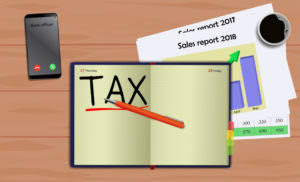
Identifying and eliminating duplicate Bookkeeping for Veterinarians vendor records is critical to managing vendor master files effectively. Duplicate entries can lead to overpayments, compliance breaches, and inefficiencies. Regular audits of vendor data using advanced analytics tools can help identify common duplication indicators, such as matching tax identification numbers or bank account details. By following these best practices for successful vendor data management strategy implementation,you can enhance operational efficiency,reduce risks,and strengthen relationships with your suppliers. Regularly review and evaluate the effectiveness of your vendor data management strategy.

What Are the 5 Key Business Processes of Master Data?
Managing vendor data can be a complex task, and it comes with its fair share of challenges. However, by understanding and addressing these challenges head-on, businesses can ensure the success of their supplier relationships. Additionally, effective Vendor Data Management promotes better supplier relationships. When you have a thorough understanding of your vendors’ capabilities and track records through data analysis, it becomes easier to identify reliable partners who align with your business goals. Building strong relationships with these trusted suppliers fosters mutual trust and collaboration for long-term success. It refers to the process of collecting, organizing, and analyzing data related to your suppliers or vendors.

Advantages of Augmenting Your Human Capital Management System with Configurable Intelligent Automation Software
Finally, consider automating invoicing processes so that payments get sent out automatically upon completion of work. Reduce manual effort on both sides and help ensure that payments are received on time – every time! Automated invoicing gives you access to real-time data on payments and vendor performance and helps inform business decisions about future contra asset account projects.
Vendor Master File Best Practices: A Roadmap For Efficient Vendor Management
In addition to improving communication and decision-making processes, efficient vendor data management also promotes transparency between buyers and suppliers. By sharing pertinent information such as pricing structures or product specifications accurately and consistently through a centralized platform, both parties can align their expectations more effectively. By having accurate and readily available supplier information at your fingertips, you can streamline procurement processes such as vendor selection and onboarding. This not only saves time but also reduces errors and ensures compliance with regulatory requirements.

Key topics

A study by the Institute of Supply Management reveals that 55% of organizations find it difficult to select suitable suppliers. Vendors can be categorized by the nature of goods or services provided, geographical location, and financial stability. For example, strategic vendors crucial to core operations may be classified differently from non-strategic suppliers. This distinction enables organizations to prioritize engagement efforts and allocate resources effectively.
- By having an easier access with vital procurement data, you can reduce significant time lag that requires you to process it.
- It’s only when the pre-determined steps are satisfactorily completed with the correct data that we have a customer.
- While the popular ERPs themselves have built-in solutions for Governance & Vendor data cleansing, they tend to be quite rigid and difficult to use.
- Vendor relationships are a win-win with powerful software to keep workflows going behind the scenes.
Furthermore, Vendor Data Management enhances collaboration between different departments within an organization. With access to comprehensive supplier profiles containing all relevant details like contract terms or delivery schedules, teams can work together seamlessly towards common goals without any confusion or miscommunication. Tracking data is harder when there are various and continuous flows of information. Additionally, the various sources require categorization and segmentation, to efficiently access it.
- This not only saves costs but also enhances efficiency across the entire supply chain.
- Schedule a demo to see our onboarding portal in action and learn how we can help you streamline your documentation process.
- This process should streamline the extension of existing information where appropriate and determine instances where new information is required.
- As mentioned earlier, it contains relevant information about suppliers in your strategic sourcing portfolio.
- Training and educating staff on vendor data management is crucial to ensure the success of your supplier relationships and overall supply chain operations.
- These insights enable them to make informed decisions quickly while minimizing disruption.
The Importance of Supplier Master Data Management
- Now it is more important than ever to ensure the accuracy of the data used to pay suppliers.
- An inefficient SMDM may increase the probability of risks and problems that the company may face.
- Therefore, supplier master data management should be a top priority for procurement professionals as it provides the organization a single version of truth for all data related to a particular vendor.
- In short, vendor onboarding is a complex process and should be broken down into key steps.
- To start, it’s important to conduct an assessment of your staff’s current understanding of vendor data management.
- Leveraging DOKKA’s capabilities can greatly enhance the efficiency, accuracy, and security of your vendor master file management.
Establishing clear communication channels with regular vendor master data management best practices check-ins can help avoid problems from occurring down the road. Your policy should also lay out protocols for addressing issues or resolving disputes if they arise. Get your small or diverse business certified, list your business in our database, and find better opportunities.
